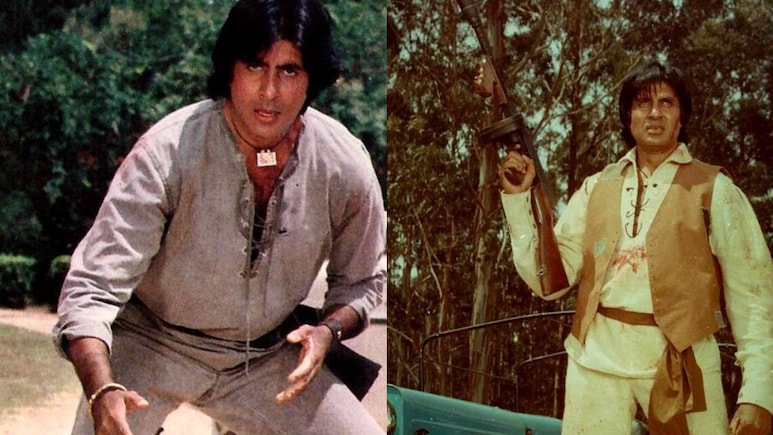
When megastar Amitabh Bachchan collapsed during the filming of Coolie in 1982, the nation held its breath. The incident occurred on the sets of Coolie, where the actor suffered a near-fatal injury during the shooting of an action scene in Bengaluru with actor Puneet Issar.
Two years later, the actor developed a rare autoimmune disease called myasthenia gravis (MG) while shooting for Mard.
T 2740 - "Trade advertisement at the launch of MARD. 2nd February 1983. A Golden jubilee colossal hit! "
— Amitabh Bachchan (@SrBachchan) December 13, 2017
'critics tore the film apart yet a monster HIT .. queue outside Nishat Theatre Kanpur .. for 2 weeks Current booking did not open ..
AND these days .. ?! pic.twitter.com/GWAi5l9Eku
Bachchan felt the first symptoms of his ailment in Bengaluru on the sets of Mard. He developed pain in his knee, a stinging sensation in the eye, a throat infection, and was experienced fatigued.
But he knew something was really wrong in Mysuru when he had trouble just drinking a glass of water, with the liquid trickling down his face. He was flown to Mumbao, according to an India Today 1984 report.
Tinnu Anand Recalls Big B's Near-Fatal Moment
Actor and director Tinnu Anand, who was preparing to launch Shahenshah at the time, remembered the day he received a distressing call from the Coolie set in Mysuru.
"I was told by the Manmohan Desai (Coolie director) unit that he has gotten injured and was taken to Bengaluru for a check-up. 'He has asked you to come to Bengaluru,' they told me," Anand recalled in an interview with Radio Nasha.
When Anand met Bachchan, he wasn't prepared for what he heard next.
"He arrived and said, 'Please sit down, I have bad news for you. I have been diagnosed with a nerve illness. During the shoot, when I was taking a sip of water, it got stuck in my throat because the message to my brain didn't go that I had to swallow it'. He then said, 'I nearly died suffocating on it'."
The filmmaker admitted that the diagnosis shook him. "He told me that the doctors have warned him that he may never be able to work again. I just collapsed listening to this," he said. "A few days later, Mr Khalid Mohammed (prominent Indian journalist, film critic, screenwriter, and film director) wrote that he had a meeting with Amitabh, who told him, 'Sorry, I have to give up on acting'. So, Shahenshah was dropped (for a while)."
What Is Myasthenia Gravis
The disease that almost ended Amitabh Bachchan's acting career is myasthenia gravis (MG), a chronic autoimmune neuromuscular condition.
It causes fluctuating weakness in voluntary muscles, particularly those of the eyes, face, and throat.
In simple terms, MG occurs when the body's immune system attacks the communication between nerves and muscles. Normally, nerves send messages to muscles using special chemicals that tell them to move. In MG, the immune system produces antibodies that block or destroy these signals, leaving muscles weak and easily fatigued.
That's why, in Bachchan's case, even something as basic as swallowing water became life-threatening - the muscles controlling that movement weren't receiving the brain's signal properly.
MG is often triggered by trauma or exhaustion. After a long period of treatment and rest, Bachchan made a miraculous recovery. Years later, Shahenshah was revived and released in 1988 becoming one of his most iconic films, remembered as much for his powerful performance as for his triumph over a life-threatening illness.
The Link To Immune Tolerance
The mechanism behind this disease connects to a concept called peripheral immune tolerance - something that has just won the 2025 Nobel Prize in Physiology or Medicine.
On October 6, 2025, the Royal Swedish Academy of Sciences announced that Mary E Brunkow, Fred Ramsdell, and Shimon Sakaguchi were being honoured "for their discoveries concerning peripheral immune tolerance".
The laureates identified special immune system "security guards" known as regulatory T cells. Their job is to stop immune cells from attacking the body's own tissues. When this tolerance fails, the immune system mistakenly targets healthy parts of the body, leading to autoimmune diseases such as MG.
In other words, in conditions like myasthenia gravis, the body's defence mechanism malfunctions - it fails to recognise certain proteins in the nerve-muscle junction as its own and begins attacking them.
What makes Bachchan's journey even more remarkable today is how science continues to uncover the mysteries behind conditions like his. The Nobel-winning discovery of regulatory T cells and their role in immune tolerance offers new hope for better understanding and treating autoimmune diseases.
Track Latest News Live on NDTV.com and get news updates from India and around the world

